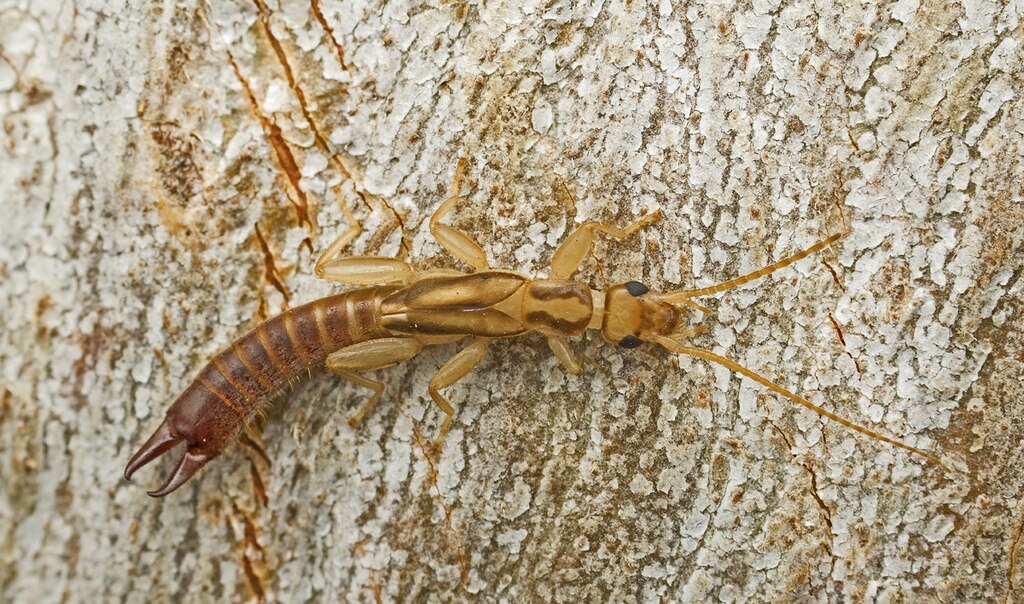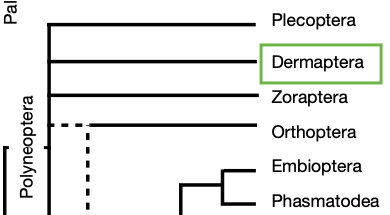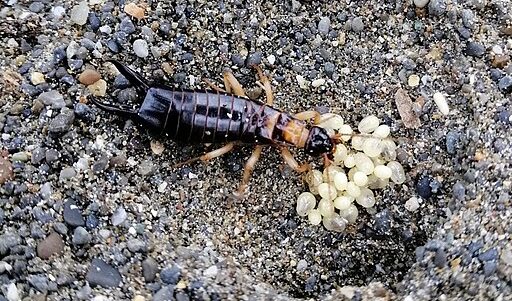18 Order of Insects: Dermaptera


Order Dermaptera
Dermaptera
- common name: earwigs; derived from folklore that European species were thought to enter ear of a sleeping person
- Greek, derma = skin; pteron = wing
- worldwide 1,800 nominal species; about 85 Australian species described so far
- best represented in tropical and warm temperate regions
- typically nocturnal, sometimes taken at lights
- thigmotactic (react positively to touch and crawl into confined spaces)
- prefers secluded and moist habitats: forest litter, under bark, stones, within soil
- most are omnivorous; some predatory forms
- earwig females care for their eggs and young nymphs

Characteristics of Dermaptera
Adults
- Small to medium-sized, bodies, 5-50mm; flattened and elongate
- prognathous, mandibulate mouthparts; antennae short to moderate length, filiform; compound eyes variable (large to absent), ocelli absent
- many species wingless; if wings present the fore wings are small leathery tegmina, hind wings semi-circular and folded fan-like under the tegmina; legs short.
- Abdomen with overlapping terga; cerci sclerotised and modified as forceps
Immatures
- Immature stages (nymphs) resemble small adults
Despite Australia being a biodiversity hotspot for earwigs, only a third of the described subfamilies of earwigs have been recorded. The distinctive forceps at the end of the abdomen are usually larger and more curved in males. The forceps can be used for defence, to hold and carry prey, for grip during copulation and sometimes to help unfold their fan-like wings.
Activities
Some interesting reading:
- An article about earwigs and parental care.
- An earwig species that squirts defensive fluid (caustic quinones).
- An unusual species of earwig that lives in caves of Borneo and feeds off the secreted body wax of hairless bats and carries bat fleas from bat to bat.
Topic Review
Do you know…?
- the main anatomical features of earwigs
- the strategies used for defence

